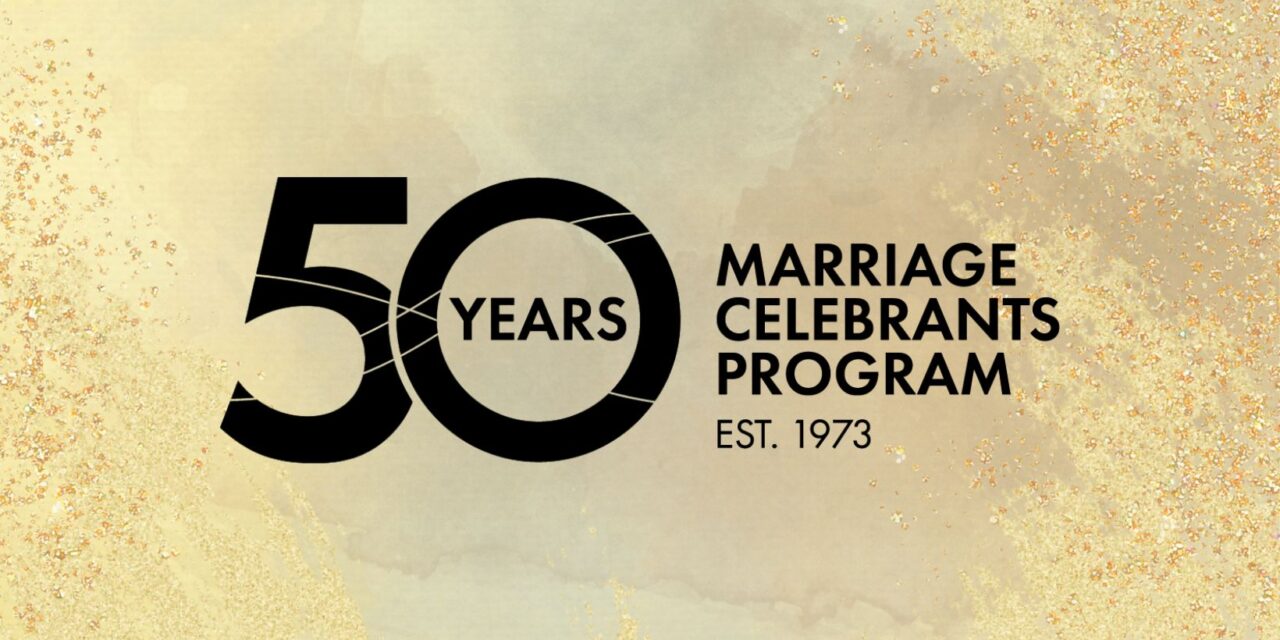My friend Jeff is a celebrant in Canada, where they actually call you an officiant, and we were talking about the wedding industry as we often do, and he says “I’ve looked into a lot of other markets, and haven’t seen one that comes anywhere near the Australian market for creativity, and branding.”
Something powerful happened 50 years ago this coming week, on the 19th of July 1973 actually. The Commonwealth Attorney-General at the time, Lionel Murphy, enacted an opportunity in section 39 of the relatively new Marriage Act of 1961 introduced by Sir Garfield Barwick, which was 12 years old at the time – introduced as part of the federalisation that started 60 years earlier, the federal government had been slowly going down the checklist of things it had to take responsibility for, and they’d finally gotten to marriage – the ability for the AG to appoint a civil, a not religious, marriage celebrant.
Up until that point in time in Australia anyone getting married was being married by a minister of religion, or if you were a First Nations Australian your community had its ceremonial rituals, arguably better and more enjoyable than anything that came over on the First Fleet.
But, fifty years ago the Attorney General appointed Lois D’Arcy. Slowly the numbers built from one to what is now 10,126 celebrants around Australia, appointed to solemnise marriages according to the law, not church doctrine. This year over 80% of weddings occurring in Australia will be officiated by a celebrant like Lois D’Arcy. A person from the community, operating a small solo trader business, putting their best selves forward to couples getting married.
All of the “things that should happen at a wedding” that people know from the movies or from church weddings are thrown out the window.
The celebrant must merely tell the couple what marriage is – the Attorney-General Department’s calls it the monitum, Latin for warning – and the couple must exchange vows, a single line whereby they take each other as husband, wife, or spouse. There’s paperwork to sign and I’ve glossed over some of the more technical details, like the celebrant needing to make sure both parties to the marriage are consenting but that’s all inside baseball talk.
For a country plagued by racism, sexism, and a legacy of poor political decisions – cough robodebt cough – to think that Australia has not only had some of the most progressive and liberal marriage laws in the entire world, but for 50 years now you could have been married by someone who is likeminded to you, it’s really encouraging. People from around the world, regardless of birthplace, nationality, skin colour, religion, and now gender, could marry another person as long as you were 18 or over, not already married, and consenting to marriage with that other person.
Those kinds of free market ideals not only enable that free market but also create opportunities for people to be free to be who they are, free to excel at their particular set of skills and talents. This is true for couples getting married, but also for celebrants. I don’t think I would have been any good at being the kind of celebrant other than what I am. People often comment on how I present my ceremonies without a script or reading off a page, and the truth is that I’m no good at doing it any other way. Thank Lionel I am allowed and encouraged to operate my celebrancy practice within my strengths.
It used to be that the venn diagram that decided who would marry you was a pretty simple circle: the church you went to and the minister’s availability.
Now, you get to separate those circles until there’s barely a sliver of intersecting space left, allowing you to find just the right person to officiate your marriage. The perfect celebrant isn’t a universal truth, but an individual one.
These unique market conditions created in 1973 encourage creativity in product, creativity in marketing, and creativity in service.
That leadership in creativity started with the celebrants in 1973 but it’s spread like a virus to all facets of the Australian wedding industry since. From wedding planners to photographers, all of the suppliers to a wedding are branches on a tree that grew from the ceremony. Who creates the best wedding ceremonies? Australian wedding celebrants with their freedom of expression, freedom of creativity, and freedom from thousands of years of wedding tradition and status quo.
Australian wedding creatives lead the global industry today, not only in their service delivery to clients in Australia and abroad, but in education and professional development, with Australians like Jai Long, James Day, Glenn Mackay, Jonas Peterson, Grace Cardona and Andrew Fenaughty, Samm Blake, and so many others that I’m lucky to not only call friend but colleague.
It’s amusing to consider that a country’s entire wedding industry being a world leader in creativity and business aptitude can all be traced back to the federal member of parliament who introduced no-fault divorces to Australia.
Lionel giveth marriage, and he taketh away.
Find out about our campaign to update the Marriage Act so it serves us well in the future at marriageact.plus





